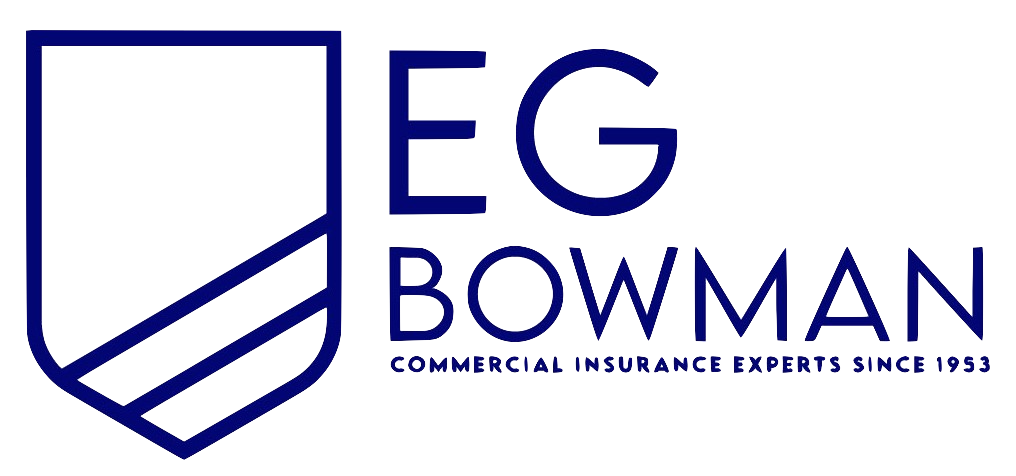New York Masonry Contractor Insurance
See How We're Different:
or Call Us: 212-425-8150

Most Common Business Policies
Index
Contact Us
The masonry industry in New York is booming, with projections estimating the market will reach a staggering $3.2 billion by 2025. This growth reflects a vibrant construction sector, but it also brings unique challenges, especially when it comes to insurance coverage for masonry contractors. Navigating the complexities of insurance in New York requires a clear understanding of the risks, costs, and legal landscape that directly impact contractors in this specialized field.
Whether you are a seasoned masonry contractor or just entering the market, this comprehensive guide will walk you through everything you need to know about insurance in New York’s masonry sector—from the types of coverage you need to the factors driving premium costs and recent industry developments shaping the insurance environment.
For those interested in deeper market insights, the
IBISWorld report on New York’s masonry industry offers valuable data reflecting the sector’s growth trajectory.
Understanding the Insurance Landscape for Masonry Contractors in New York
Insurance is a critical component of operating a masonry contracting business safely and legally in New York. Given the physical nature of masonry work—which involves heavy materials, heights, and complex structural elements—contractors face significant risks that insurance policies must cover.
One of the most important types of coverage for masonry contractors is general liability insurance. This protects against claims related to property damage or bodily injury caused during the course of work. In New York, the average cost of general liability insurance for masonry contractors is approximately $61 per month, with typical policy limits of $1 million per occurrence and $2 million aggregate. These limits provide a solid foundation of protection but may need to be adjusted based on project size and risk exposure.
Beyond general liability, contractors often need workers’ compensation insurance, which covers medical costs and lost wages if employees are injured on the job. This is especially relevant in New York, where workers’ compensation premiums have escalated significantly. According to Dan Corbin, director of research for the Professional Insurance Agents of New York, one reason for this increase is the legal environment that allows subcontractors to sue general contractors directly for injuries, amplifying liability risks and insurance costs. This dynamic makes it crucial for contractors to carefully evaluate their coverage needs and legal protections.
In addition to these essential coverages, masonry contractors may also consider specialized insurance products such as equipment insurance. This type of coverage protects against loss or damage to tools and machinery that are vital for completing masonry projects. Given the high cost of equipment like scaffolding, mixers, and cutting tools, having this insurance can safeguard a contractor's investment and ensure that operations can continue smoothly even in the event of an unforeseen incident. Furthermore, masonry contractors should also be aware of the importance of commercial auto insurance, particularly if they use vehicles to transport materials or equipment to job sites. This insurance not only covers liability in case of an accident but also protects the contractor’s vehicles from damage or theft.
Another critical aspect to consider is the potential need for professional liability insurance, especially for contractors who provide design or consulting services as part of their projects. This coverage protects against claims of negligence or errors in the services provided, which can be particularly pertinent in masonry work where structural integrity is paramount. As the construction landscape evolves, staying informed about the latest insurance trends and legal requirements is vital for masonry contractors. Engaging with industry associations and attending workshops can provide valuable insights into best practices for risk management and insurance procurement, ultimately enhancing the safety and sustainability of their businesses.

Why Insurance Premiums Are Higher in New York
New York stands out for having some of the highest insurance premiums in the country for masonry contractors. John W. Griffin, vice president of sales for the John M. Glover Agency, highlights that the average liability loss cost in New York is 500% higher than in seven other states. This dramatic increase translates into significantly higher premiums for contractors operating in the state.
The reasons behind these elevated costs are multifaceted. Aside from the legal environment mentioned earlier, New York’s dense urban construction sites often involve complex subcontracting arrangements and heightened risks of accidents or property damage. Additionally, insurance companies may face higher claim payouts due to the cost of litigation and repairs in the region.
For example, a 2022 case involving Nationwide’s refusal to defend a contractor in a lawsuit over collapsed brickwork underscores the challenges insurers face in defining coverage boundaries. The insurer argued that the work was performed outside the insured area, highlighting the complexities of insurance claims in masonry projects. Such cases contribute to the cautious approach insurers take and the resulting premium hikes.
Moreover, New York's stringent building codes and regulations further complicate the insurance landscape for contractors. These codes are designed to ensure safety and quality, but they can also lead to increased operational costs for contractors, who must invest in compliance measures. This, in turn, can lead to more claims, as any failure to meet these rigorous standards can result in significant liabilities. The combination of high compliance costs and the potential for costly litigation creates a challenging environment for both contractors and insurers alike.
Contractors should be prepared for these realities and work closely with insurance agents who understand New York’s unique market to secure appropriate coverage at competitive rates. More details on these insurance challenges can be found in the CooperatorNews New York article on escalating insurance costs. Additionally, staying informed about emerging trends and legislative changes in the construction industry can help contractors navigate the complexities of their insurance needs more effectively, ensuring they are not caught off guard by sudden shifts in policy or pricing structures.
Key Insurance Policies for Masonry Contractors
While general liability and workers’ compensation are foundational, masonry contractors should consider additional policies to safeguard their businesses comprehensively.
1. Commercial Auto Insurance
Many masonry contractors use vehicles to transport materials and equipment. Commercial auto insurance protects against accidents involving these vehicles, which is essential given the busy streets and heavy traffic typical in New York. Additionally, this coverage can extend to liability for injuries or damages caused by drivers who are employees, ensuring that the business is protected from potential lawsuits arising from vehicular incidents.
2. Builders Risk Insurance
This policy covers buildings under construction, protecting against damage caused by fire, vandalism, or weather events. Given the significant investment in masonry projects, builders risk insurance can mitigate potentially devastating losses. It’s particularly crucial for contractors to understand the specific terms of this policy, as it can vary widely in coverage. For instance, some builders risk policies may include coverage for materials stored off-site, which can be a significant advantage for larger projects that require extensive material management.
3. Professional Liability Insurance
Also known as errors and omissions insurance, this coverage protects against claims arising from design errors or professional mistakes. While not always mandatory, it can be invaluable when working on complex projects requiring precise engineering. This insurance can also cover legal fees and settlements, which can be substantial in the event of a lawsuit. For masonry contractors involved in design-build projects, having this coverage is particularly important, as it provides peace of mind when navigating the intricate details of construction and design.
4. Equipment and Tools Insurance
Masonry work relies heavily on specialized tools and machinery. This insurance covers repair or replacement costs if equipment is stolen, damaged, or destroyed. Given the high cost of masonry tools, which can include everything from mixers to scaffolding, having this coverage can be a financial lifesaver. Moreover, some policies may offer rental reimbursement for when equipment is out of commission, allowing contractors to continue their work without significant delays or losses.
Choosing the right combination of these policies depends on the size of the business, project scope, and risk tolerance. Many contractors find working with an experienced insurance broker helps tailor coverage to their specific needs. Brokers can provide insights into industry trends and emerging risks, ensuring that contractors are not only compliant with regulations but also adequately protected against unforeseen challenges. Additionally, regular policy reviews can help contractors adjust their coverage as their business grows or as new risks arise, making it essential to stay proactive in managing insurance needs.
Market Trends Impacting Masonry Contractors and Insurance
The masonry industry is evolving, and these changes influence insurance considerations. For instance, the Concrete Masonry and Hardscapes Association’s 2025 Contractor Industry Report reveals that nearly half of hardscape contractors report gross sales under $1 million, and 46% recruit staff primarily through word of mouth or recommendations. This highlights the prevalence of small to mid-sized operations that may have different insurance needs compared to larger firms. These smaller contractors often face unique challenges, such as limited access to capital and resources, which can affect their ability to invest in comprehensive insurance coverage. As a result, they may opt for basic policies that do not fully protect against the diverse risks associated with masonry work.
Additionally, innovations in materials and techniques, such as permeable interlocking concrete pavement (PICP), are gaining traction. In 2023, PICP production increased by 5.8%, with over half of surveyed contractors expecting further growth by 2025. These advancements can introduce new risks but also opportunities for contractors to differentiate themselves. Insurance policies may need to adapt to cover emerging technologies and materials adequately. For example, the use of PICP not only addresses environmental concerns by managing stormwater runoff but also requires specialized knowledge for installation. This specialization may necessitate tailored insurance products that account for the unique liabilities associated with these innovative installations, ensuring that contractors are protected as they expand their service offerings.
Another trend worth noting is the strong return on investment for projects involving manufactured stone veneer (MSV). According to the 2024 Cost vs. Value Report, MSV projects average a cost of $11,287 but yield a resale value of $17,291, representing a 153% ROI. This popularity could drive demand for contractors skilled in MSV installation, influencing the types of projects insured and the associated risks. As homeowners increasingly seek aesthetic enhancements that offer high returns, masonry contractors may find themselves competing for a limited pool of skilled labor. This competition can lead to increased operational risks, such as project delays or quality control issues, which insurance providers will need to consider when underwriting policies for these contractors.
For those interested in the detailed market dynamics, the
Concrete Masonry and Hardscapes Association’s market reports provide comprehensive insights. These reports not only outline current trends but also forecast future developments, enabling contractors to make informed decisions about their business strategies and insurance needs. By staying abreast of these trends, masonry contractors can better position themselves in a competitive landscape, ensuring they are adequately protected while capitalizing on emerging opportunities.
Practical Tips for Managing Insurance Costs
Given the high insurance premiums in New York, masonry contractors must be proactive in managing costs without compromising coverage quality. Here are some practical strategies:
Maintain a Strong Safety Record
Insurance companies reward contractors who demonstrate low accident rates and robust safety protocols. Investing in employee training and site safety can reduce claims and premiums over time. Additionally, implementing regular safety drills and maintaining a culture of safety awareness among workers can further enhance this record. By fostering an environment where employees feel responsible for their own safety and that of their colleagues, contractors can significantly lower the likelihood of accidents and injuries on the job site, leading to long-term savings on insurance costs.
Bundle Policies
Many insurers offer discounts when contractors bundle multiple policies, such as general liability, workers’ compensation, and commercial auto insurance. Bundling can simplify management and reduce overall costs. Furthermore, it allows contractors to streamline their insurance processes, making it easier to manage renewals and claims. By consolidating their coverage under one provider, contractors can also benefit from a more personalized service, as the insurer becomes more familiar with their specific needs and risks associated with masonry work.
Review Coverage Annually
Regularly assessing insurance needs ensures that contractors are not overpaying for unnecessary coverage or underinsured for current risks. Adjusting policy limits and deductibles can optimize premiums. It’s also wise to stay informed about changes in the industry, such as new regulations or emerging risks, which may necessitate adjustments in coverage. By conducting a thorough review each year, contractors can identify gaps in their insurance and address them proactively, ensuring they remain adequately protected while keeping costs manageable.
Work with Experienced Brokers
Insurance brokers familiar with New York’s masonry industry can navigate the complex market, negotiate better rates, and recommend appropriate coverages tailored to each contractor’s profile. These brokers often have established relationships with various insurers, allowing them to advocate effectively on behalf of their clients. Additionally, an experienced broker can provide valuable insights into industry trends and best practices, helping contractors stay ahead of potential liabilities and ensuring that they are not only compliant but also strategically positioned to minimize risks. This partnership can be instrumental in crafting a comprehensive insurance strategy that aligns with the contractor's business goals.

Conclusion: Staying Protected in a Growing Market
The New York masonry industry is poised for significant growth, but with this expansion comes increased responsibility to manage risks effectively. Insurance is not just a regulatory requirement—it is a vital tool for protecting your business, employees, and reputation.
Understanding the unique challenges of the New York market, including elevated premiums driven by legal and operational factors, allows contractors to make informed decisions about coverage. By staying up to date on industry trends, leveraging expert advice, and implementing sound risk management practices, masonry contractors can secure the insurance protection they need to thrive.
For more information on the legal and insurance challenges facing contractors in New York, the
CooperatorNews New York article offers valuable perspectives from industry experts.
